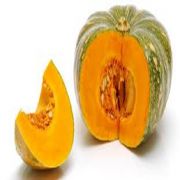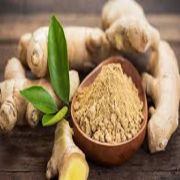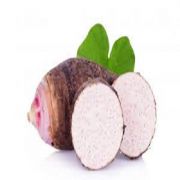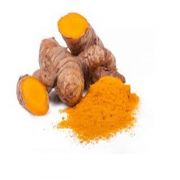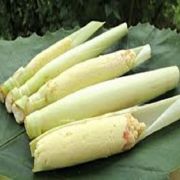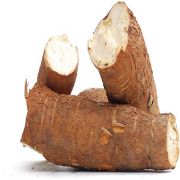New Valley Produce motive is to help change the life style of the farmers in the interior. Those unprivileged, exploited farmers who have always been targeted and bullied needs to be recognised and they should get what they deserve. They are ordinary people with very soft heart and they have family as we have. They also have the same dream as we have for our children and family but the life they live is hard to imagine. They don’t have access to technology, public transport, towns and cities as we have but they still smile and live their life happily. Their children’s are deprived from education and modern facets of life. We want to help change their life’s by marketing their produce oversea. Every dollar which will be earned will help change life’s of more than 50,000 people.
Fiji Island, country and archipelago in the South Pacific Ocean. It surrounds the Koro Sea about 1,300 miles (2,100 km) north of Auckland, New Zealand.
The archipelago consists of some 300 islands and 540 islets scattered over about 1,000,000 square miles (3,000,000 square km). Of the 300 islands, about 100 are inhabited. The capital, Suva, is on the southeast coast of the largest island, Viti Levu (“Great Fiji”).
The islands enjoy a tropical maritime climate without great extremes of heat or cold. Occasionally traversing the isles are tropical cyclones between November and April yearly. Heavy downpours dominate these months when temperatures can rise to the early 30's Centigrade. In the cooler months between May and October temperatures are in the lower 20's Centigrade.
The total land area is a mere 18,333 square kilometers, with the two major islands - Viti Levu and Vanua Levu - accounting for 87% of the total lands.
Other main islands are Taveuni, Kadavu, Rabi, Vatulele, Beqa, and Qamea. In addition there are several important groups of islands - Rotuma (8 islands), Lau (57), Moala part of the Lau group (3), Lomaiviti (12), Mamanuca (10), and the Yasawa group (20).
We are predominantly Melanesian throughout, and the boldness of early sea rovers yielded a mixture of racial types and cultures, Melanesian and Polynesian, even in the main islands.
Not only are Fijians a happy race of people, our lifestyles show the best traits of Melanesia, Polynesia, India, China and other nationalities that make us unique. There is love of nature in all its aspects as well as fear, imagination, happiness and laughter.
Indigenous Fijians and Rotumans own 88% of the land while the State holds 4% and private freeholds account for about 8%.
The capital Suva is one of the two cities on the main island of Viti Levu, located on the south-eastern end, with Lautoka the other, in the west. While this site refers to Fijians and Rotumans as one, it should be noted that the islands of Rotuma - about 600kms. to the north of us were never conquered, yet were ceded by her chiefs to the British in the hope of quelling internal factional fighting by her peoples in the 1880's as outside influences came to bear.
Indeed, Rotuma is now administered from Suva and is a port of entry into the group. Our peoples have since intermarried and share much good memories together.
Nadroga-Navosa province has about 14,600 families. Located on the south-western part of Viti Levu, on the main thorough way from Suva to Lautoka ports. It is served by major roads networks.
The province contains one of Fiji's 'salad bowls', is abundant in taro, kava, copra and a host of other produce.
The famous Mamanuca group of islands are part of the province.
Nadroga-Navosa Province is part of the Burebasaga confederacy, one of the three traditional chiefly hierarchies of Fiji. It covers about 2,385 square kilometers, and the 2007 census recorded a population of about 58,400. Its major town is Sigatoka (population 8,000) and is less than an hour's drive from Nadi international airport.
Navatusila Disctrict (Tikina) of Navosa consists of the villages Nabutautau, Nasauvakarua, Mare, Tuvavatu and Nanoko village. Three other settlements of Natoka, Tokoni and Natodrokadroka are included the district.
Navatusila Disctrict which is 2,219 feet above sea level is accessible by road from Sigatoka, Nadi and Ba. Roads are gravelled for much of the way and rough. No public transport is available. Some of the farmers who are at a disadvantage economically due to their remote locations have agro- ecological conditions that offer potential for growth and improvement. Yet, their supply response to growing demand for domestic produce has been weak. High costs and dis-economies of small-scale production partly explain those weak supply responses. But other factors play a part.
Small-scale remote farmers and many other actors along agricultural value chains face structural constraints in marketing, transport, handling and processing. These are exacerbated by weak and mistrustful relationships amongst market players. As a result, the agricultural sector has failed to expand and costly import of produce that could and should be grown by Fijian farmers has increased.
Nabutautau is the chiefly village in the district and the chief is addressed as the Tui Navatusila. The village men have traditionally been engaged in subsistence farming, and working together in what is called the solesolevaki or community effort in building houses, farming and raising money for education and other communal projects. The women traditionally are able to weave mats known as the ibe batiwa which is only woven by Navatusila women and a basket called tabekasera where bamboo is used.
Knowing Fiji Islands which is a tropical island country with amazing weather and fertile soil, every produce out of Fiji is off premium quality. The problem we had was consistent supply to international market. Fiji has non-commercial farmers and hence maintaining a consistent supply chain was an issue. In 2016, the Directors of New Valley Produce introduced cluster farming so that a consistent supply chain could be maintained. By introducing cluster farming, it is not only that we worked on stabilizing the supply chain but we also worked with our farmers on the need of the market. What our farmers are to grow and in what quantity so that we have ample supply to meet the market requirement.
New Valley Produce is the first to introduce fixed rate for the produce so that the farmers are aware of the value of the produce they have at any point of time unlike before where they were constantly being bullied with pricing. We are also going to introduce the cashless system where every farmer will have their money deposited into their account within 48 hours from the time they have dropped the produce with us.
 Competitive Shipping Rates
Competitive Shipping Rates

